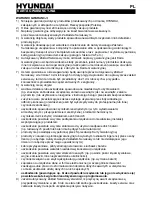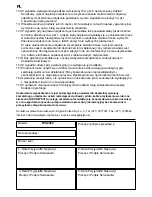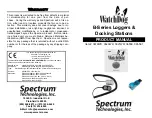
EN
EN - 27
• When it’s alert, the corresponding icon “
“ or “ ” and temperature digit would flash on the
LCD. Press any buttons to stop the alert sound, otherwise, it will sound for 2 minutes, and stop
automatically.
(4) Frost Alert
• Frost Alert: “
” is shown if the outdoor temperature (any channel) is between -2°C ~ +3 °C.
(5) The use of 1.5m cord Temperature Probe:
• Insert the probe plug (D5) to the jack on the right hand side of the Thermo Sensor Unit.
• Put the cable outside and leave the Thermo Sensor Unit indoor to avoid freezing up the battery
when the outdoor temperature is below -20 °C.
• Always use the temperature probe to sense the temperature when the temperature is between
the following range: -50 °C ~ 0°C and +50°C ~ + 70°C.
7. TIME AND ALARM SETTING
7.1 Radio Controlled Clock:
• After batteries inserted and main unit finishes receiving the transmission from outdoor sensor,
the clock automatically starts to scan the DCF time signal. Radio Control Icon“
” flashes on
the LCD.
flashes,
Indicating now is receiving
DCF signal
turns on,
Indicating signal received
successfully
disappear,
Indicating signal reception
failed
• The clock automatically scans the time signal at 3.00 a.m. every day to maintain accurate
timing. If reception fail, scanning stops (“
” on LCD disappear) and repeats again at 4.00
a.m. 5.00a.m. and6.00a.m.
• The clock can be set to scan the time signal manually by holding “WAVE” button (B6) for 3
seconds. Each reception takes about several minutes. If receptions fail, scanning stops. (“
” on LCD disappear) and repeats again on next full hour. E.g. scanning failed at 8:20a.m. It will
scan again at 9:00a.m.
• Stop scanning by holding “WAVE” button (B6) for 3 seconds.
• “
DST
” shown on the LCD if it is in Daylight Saving Time Mode.
7
.2 Manual Time Setting:
• Hold “MODE” button (B1) for 3 seconds to enter Clock/Calendar setting mode.
• Press “▲” (B5) or “▼” (B4) button to adjust the setting and press “MODE” button (B1) to
confirm each setting.
(By keeping the “▲” (B5) or “▼” (B4) button pressed, could accelerate the process and reach
the desired value more quickly)
• The setting sequence is shown as follow: Time zone, Hour, Minutes, Second, Year, Month,
Day, Day-of-week language, 12/24 Hour, C/F.
• 8 languages can be selected in Day-of-week, they are: German, French, Spanish, Italian,
Dutch, Denmark, Russian, and English.
• The languages and their selected abbreviations for each day of the week are shown in
the following table.
















































